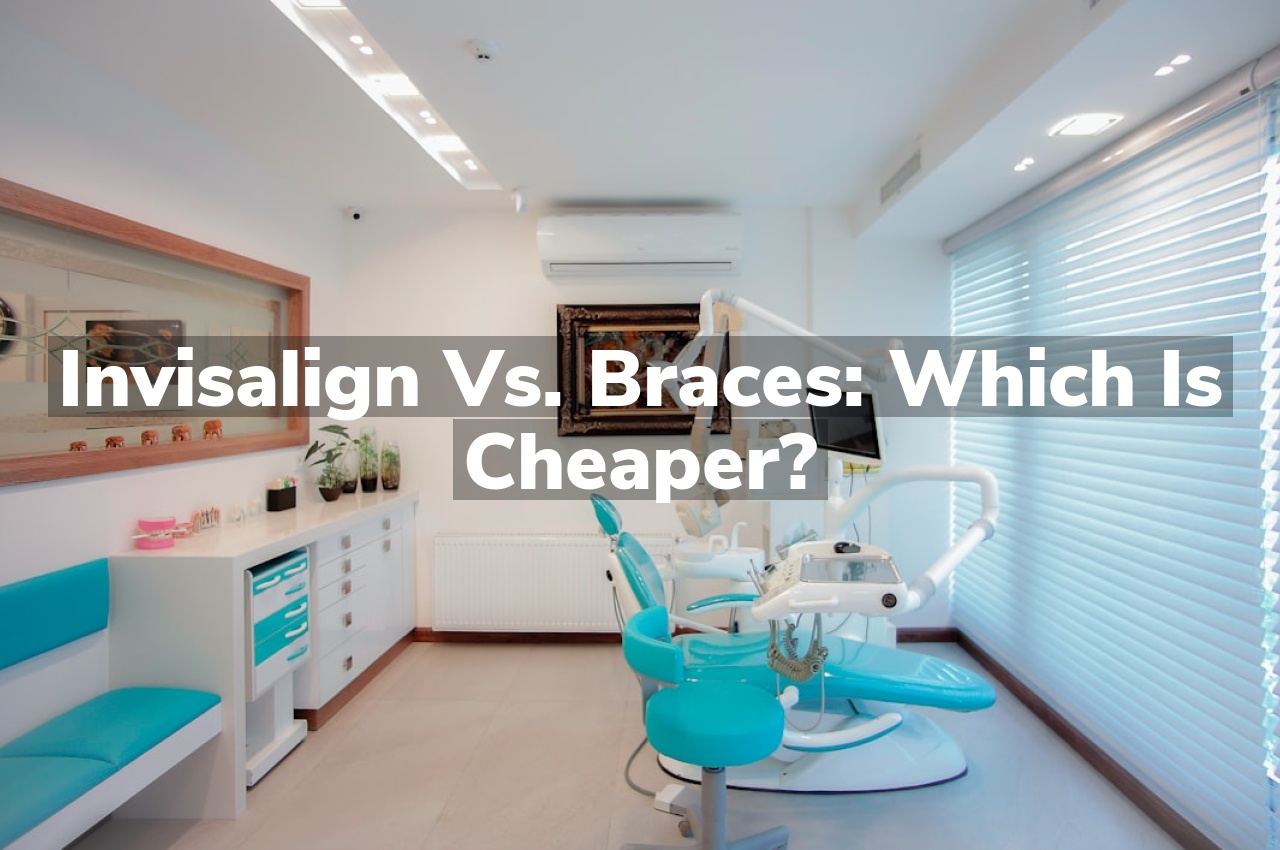Are you weighing your options between Invisalign vs. braces to determine which is more cost-effective? The cost can vary widely depending on individual needs and treatment duration. Generally, Invisalign tends to be slightly more expensive than traditional braces, but prices fluctuate based on specific alignment issues and geographic location.
Invisalign vs. Braces: Initial Cost Comparison
When considering the initial cost comparison between Invisalign and braces, it’s important to understand that the prices can vary widely depending on several factors including geographical location, the complexity of the dental issues, and the duration of the treatment. Generally, traditional braces are often perceived as being less expensive upfront compared to Invisalign. This is primarily because the technology and customized manufacturing involved in Invisalign can contribute to a higher initial cost.
However, the total cost can fluctuate based on individual needs and specific treatment plans prescribed by dental professionals. Each option comes with its own set of variables that can influence the overall financial investment required. It’s crucial for individuals to consult with their dental care providers to get a clearer picture of the costs involved. For more insights, you might want to consider reading Is Invisalign Worth the Cost? to understand the value proposition offered by Invisalign.
Long-Term Financial Implications
When comparing the costs of different dental alignment treatments, it’s crucial to consider not only the initial investment but also the long-term financial implications. Traditional braces often involve regular adjustments and potentially more visits to the dental office, which might add up over time. On the other hand, alternative alignment options might have a higher upfront cost but could potentially require fewer dental visits, potentially reducing the overall cost over the duration of the treatment.
Understanding the full scope of financial commitments necessary for maintaining and completing the alignment process is essential. For more information on alternative alignment treatments, you can visit Warrington Invisalign Clear Aligners.
Insurance Coverage Variations
When considering the cost of Invisalign vs. braces, it’s essential to understand that insurance coverage can vary significantly between different providers and plans. Some insurance policies may cover a portion of the cost for either treatment option, while others might favor one over the other or offer no coverage at all. It’s important for individuals to review their specific insurance benefits to determine what kind of financial support they can expect when choosing between Invisalign and braces.
Maintenance Costs
When comparing Invisalign vs. braces, considering the ongoing maintenance costs is crucial. Traditional braces often require regular visits to the orthodontist for adjustments, which can add up over time. In contrast, Invisalign aligners may seem less intensive since they are replaced periodically with a new set as teeth adjust. However, both options will necessitate routine care and check-ups to ensure proper alignment and oral health. For more information on dental services, consider visiting Dr. Caren Franz DMD PC, your local Warrington Dentist.
Treatment Duration Impact
When considering the cost-effectiveness of Invisalign vs. braces, it’s crucial to think about the treatment duration impact on overall expenses. Generally, the length of time required for correcting dental alignments can vary significantly between the two options. This variation in treatment duration might influence the total cost incurred by individuals, as longer treatments may involve additional appointments and potential adjustments. Understanding how the duration of treatment can affect overall costs is an important aspect when evaluating the financial implications of each orthodontic method.
Aesthetic Considerations
When comparing Invisalign vs. braces, aesthetic considerations often play a significant role in the decision-making process. Invisalign offers a discreet orthodontic solution with its clear aligners that are virtually invisible, appealing to adults and teens who are self-conscious about their appearance. Traditional braces, with visible metal brackets and wires, are more noticeable, which can be a concern for those who prefer a less conspicuous option. Choosing between Invisalign vs. braces often comes down to how comfortable you feel with the visibility of your orthodontic treatment.
Comfort and Convenience Factors
When comparing Invisalign vs. braces, it’s essential to consider the comfort and convenience each option offers. Invisalign aligners are renowned for their comfort due to the smooth, plastic material that contrasts with the sharp edges of traditional metal braces. Additionally, Invisalign allows for easy removal during meals and when brushing or flossing, offering a convenience that braces cannot match. This flexibility can lead to a more pleasant and less disruptive daily routine, making Invisalign a popular choice for those looking to straighten their teeth without the hassle and discomfort associated with traditional braces.
Availability and Accessibility
When considering Invisalign vs. braces, it’s important to evaluate the availability and accessibility of both options. Traditional braces are widely available and offered by nearly all orthodontists, making them a highly accessible choice for patients worldwide. In contrast, Invisalign requires specialized training for the providers, which can affect its availability. However, as Invisalign has grown in popularity, more providers have become certified to offer this treatment, significantly increasing its accessibility. When choosing between Invisalign vs. braces, consider your location and the availability of certified providers in your area to ensure you can receive the treatment that best suits your needs.
Resale Value Differences
When considering the cost-effectiveness of Invisalign vs. braces, it’s important to note that there is no resale value for either treatment once used. Both Invisalign and traditional braces are custom-made for the individual’s teeth, making them unusable by anyone else after treatment is completed. Therefore, when evaluating the overall cost, potential buyers should focus on factors such as treatment duration, aesthetic preferences, and comfort rather than expecting any form of resale value. This unique aspect underscores the importance of choosing the right option based on personal needs and long-term dental health benefits.
Conclusion
For further inquiries on “Invisalign vs. Braces: Which is Cheaper?”, please call us at 215-918-5630 or read our reviews on Google Maps.





